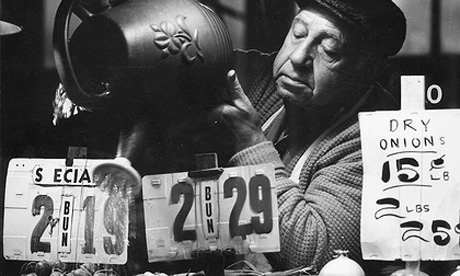
Hawking traders, bustling aisles, weird and wonderful vegetables – there’s no better place for photography than a market. Here we help you capture the action
Markets are a happy hunting ground for photographers, offering up a smorgasbord of opportunities: sizzling food and intriguing local delicacies, colourful piles of fruit and vegetables, arts and crafts, and a wealth of portraits.
Part of the joy of markets is just wandering and discovering for yourself, but it’s worth doing a bit of reading up in advance so you don’t miss key characteristics.
In the souks of Marrakesh, for example, head to the section where medicines and chameleons are sold, or where cloth is dyed a distinctive indigo colour.
Try to shoot in a variety of styles: close-up details as well as wide shots showing the whole market. You can either use lenses of different focal lengths or use the ‘manual zoom’ – your legs, to move you closer or further away!
One good way of creating a sense of place is to shoot an object in the foreground – such as a pile of vegetables or local jewellery – and render the rest of the market as an out-of-focus background.
Market traders are often gregarious and lively, and used to attracting the attention of passers-by to sell their wares. This means that you can often shoot dynamic and evocative portraits. It also means that if you try to steal portraits without permission you are likely to be shouted at, at the very least! Although there is a place for candid portraiture (shooting pictures without your subject knowing), you should not take pictures of people who are unwilling to be photographed.
The best (and safest) way to get engaging portraits is to walk up to people and ask about their goods. Even if you don’t share a language, you can communicate with a smile, though you may have to buy something to secure a portrait.When you do take pictures of stallholders, try to take natural shots. Don’t just shoot and move on: step to one side and shoot them interacting with the next person. Showing a haggling customer or a stallholder in profile, with the rest of the market in the background, conveys a real sense of market life.
Markets are perfect places to photograph food, whether it’s endangered species in Laotian villages, roasted dog in Vietnam or massive piles of colourful and strangely shaped vegetables all over the world.
Try to snap the preparation and cooking as well as the end product and, for frame-filling graphic images, zoom in on colourful fruit. Look for patterns in the goods and focus on contrasts, such as the one red apple in a sea of green. And don’t forget to taste the food yourself: it’s a good way to forge a bond before shooting a portrait.
Markets often present a number of technical problems, mostly concerning light. Markets tend to be either completely or partially covered. If they are completely covered you will be shooting in artificial or subdued light.
To compensate for low light levels when shooting digitally you can increase the ISO sensitivity. Modern digital cameras have the ability to shoot in very low light levels without creating extra ‘noise’ (coloured speckles). This means you can handhold the camera in even the dimmest light. To help with handholding, consider ditching the kit zoom lens that came with your camera, and investing in a simple standard lens or fixed focal length wide-angle lens. As well as giving you a small, spare lens in case the kit zoom lens breaks, a standard lens will have a much larger maximum aperture, letting in more light and allowing you to shoot in lower light levels.
If you are shooting in subdued or artificial light you will have to alter the white balance on your camera to avoid an unpleasant colour cast. When in shadow, use (predictably) your camera’s ‘shadow’ setting; if your market is lit by artificial light, use either the ‘fluorescent’ or ‘incandescent’ setting depending on the light source.
Contrast can be a massive issue if you are photographing in a market that is partially covered, or where people are sheltering beneath umbrellas. No camera – whether film or digital – can handle this great contrast between sunlight and shadow. Parts of your picture will either be over-exposed or obscured by inky shadow.
The easiest way to avoid this is to compose your shots so that your picture is predominantly either in light or shadow. If that’s not possible, you can use fill-in flash to lighten the dark areas. If there is not a specific fill-in flash setting on your camera, set the flash to ‘forced’ or ‘always on’: the flash will fire even if the camera thinks there is enough light, literally filling in the shadows.
This technique should work if the shadow areas are relatively small but, for large shadow areas, fill-in flash can look unnatural. Smaller built-in flashes might also be too weak to light large areas some distance from the camera. Shooting on overcast days – when the contrast is not so great – can also help to balance high-contrast shots.
It’s easy to practise your market photography: just head for your local farmers’ market or one of the famous London markets such as Borough Market or Petticoat Lane. Don’t just photograph ‘things’: practise approaching people and asking if you can take their picture. Photographing in this country means you will at least share a language, and be able to hone your portrait skills.
Post the results for others to see and rate on myWanderlust.